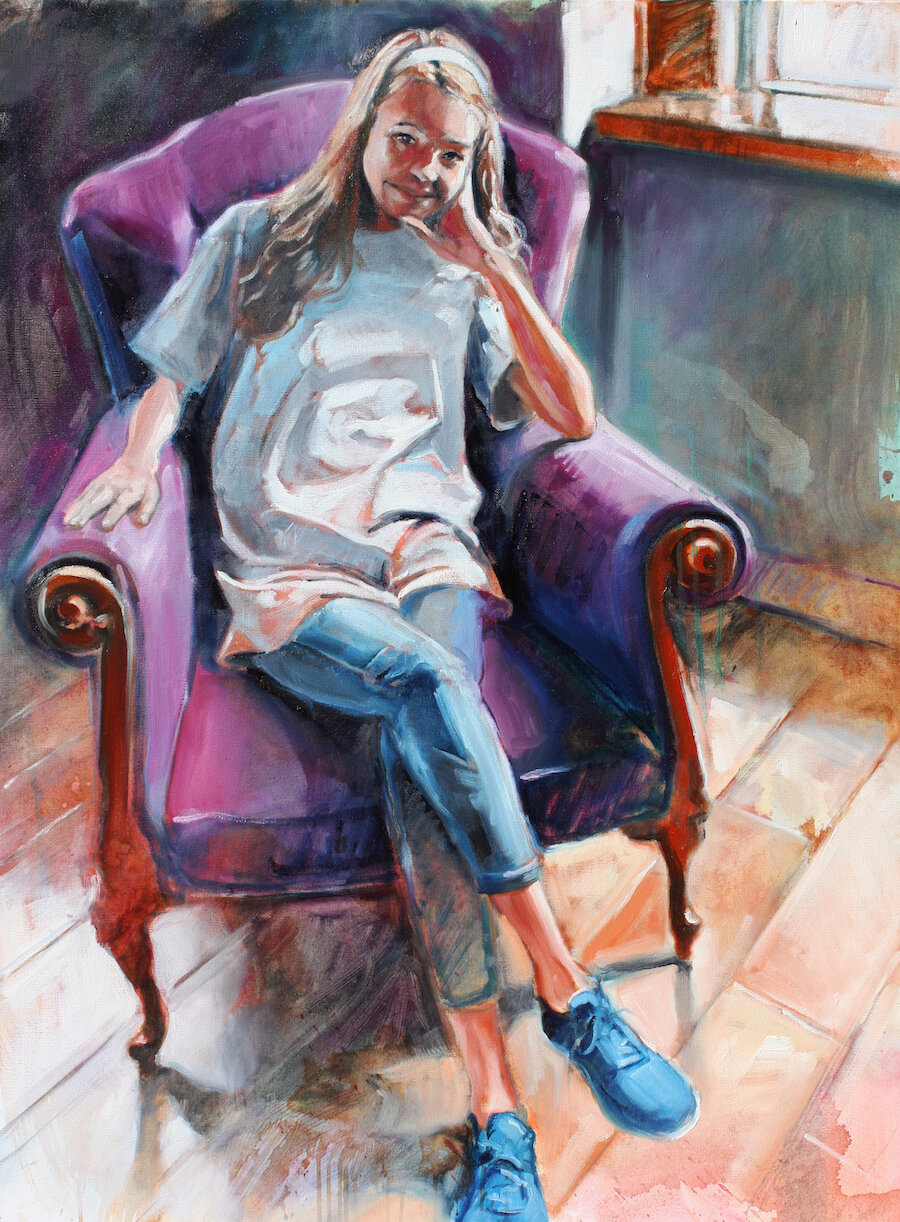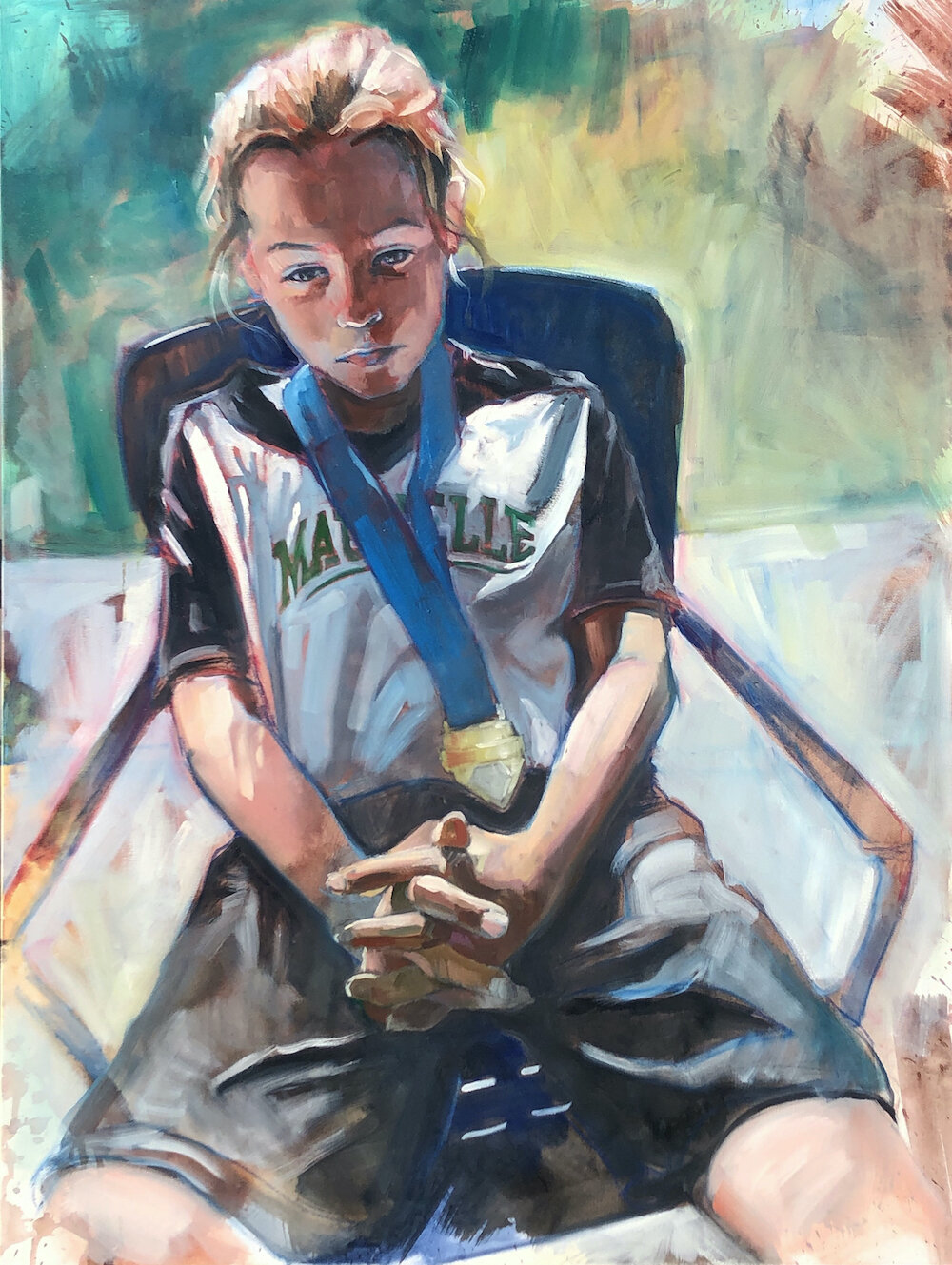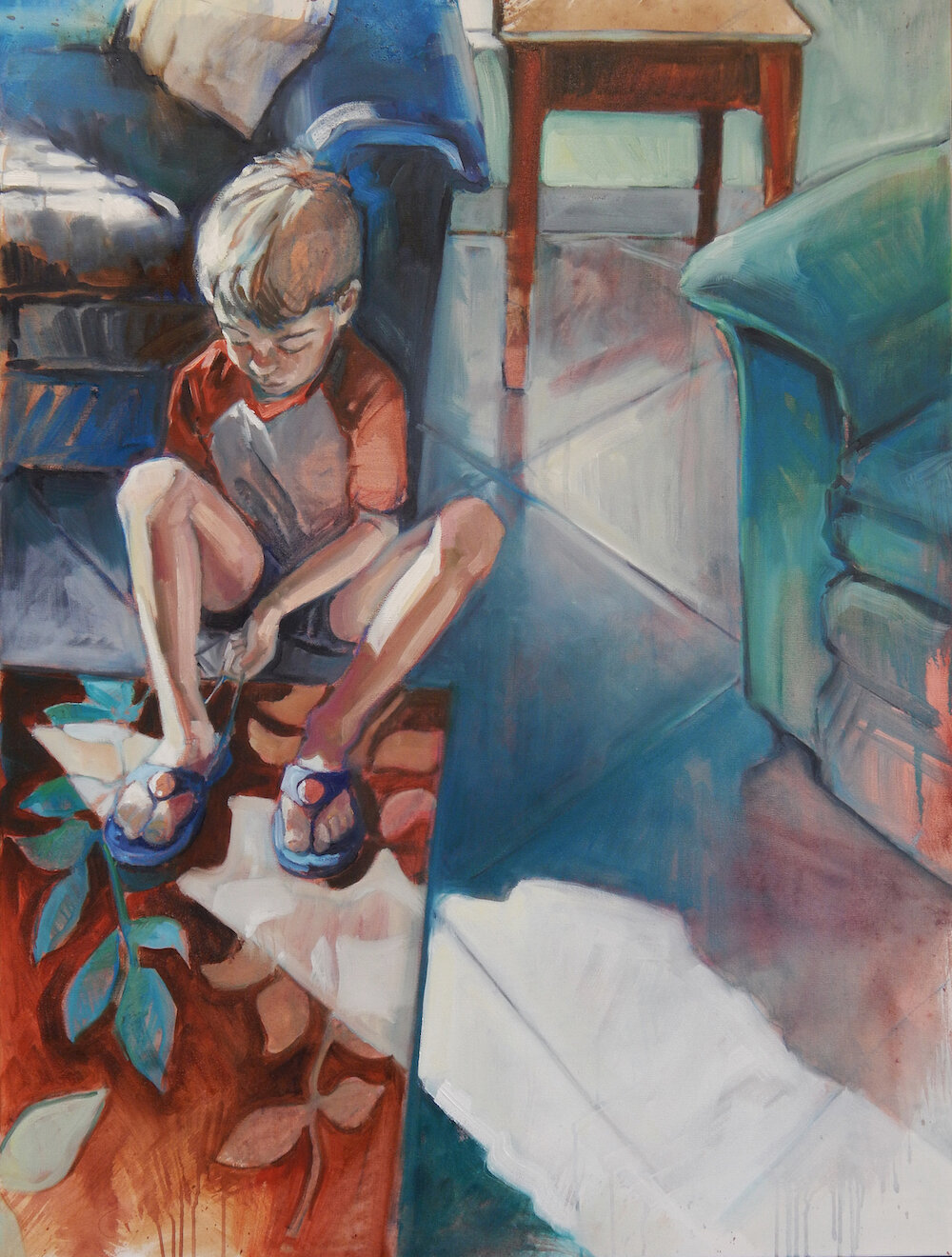Interview with artist/teacher Jason McCann
Jason McCann was born into an artistic family. His parents, Dennis and Connie McCann are well-known and highly collected artists, who, like Jason, are active in the central Arkansas art scene and enjoy teaching art to all ages. Jason earned a B.A. in Art Education from the University of Central Arkansas in 2001 and an M.A. in Fine Arts (painting and drawing) from the University of Arkansas at Little Rock in 2007. Teaching art is also an important part of Jason’s life. He has been teaching art in the public school system for 20 years; the last 18 years at Central High School in Little Rock, Arkansas. Jason also has taught in the visual arts program at the Arkansas Governor’s School for 12 years and conducts group art lessons at the McCann studio. Jason, his wife and 3 children reside in Maumelle, Arkansas. Jason is an expressive figurative and architectural artist working in oil, pastel, charcoal, and watercolor. His works are exhibited regularly throughout the state. Jason is represented by Boswell Mourot Fine Art in Little Rock and additional works can be found at his website.
Examples from The American Student series
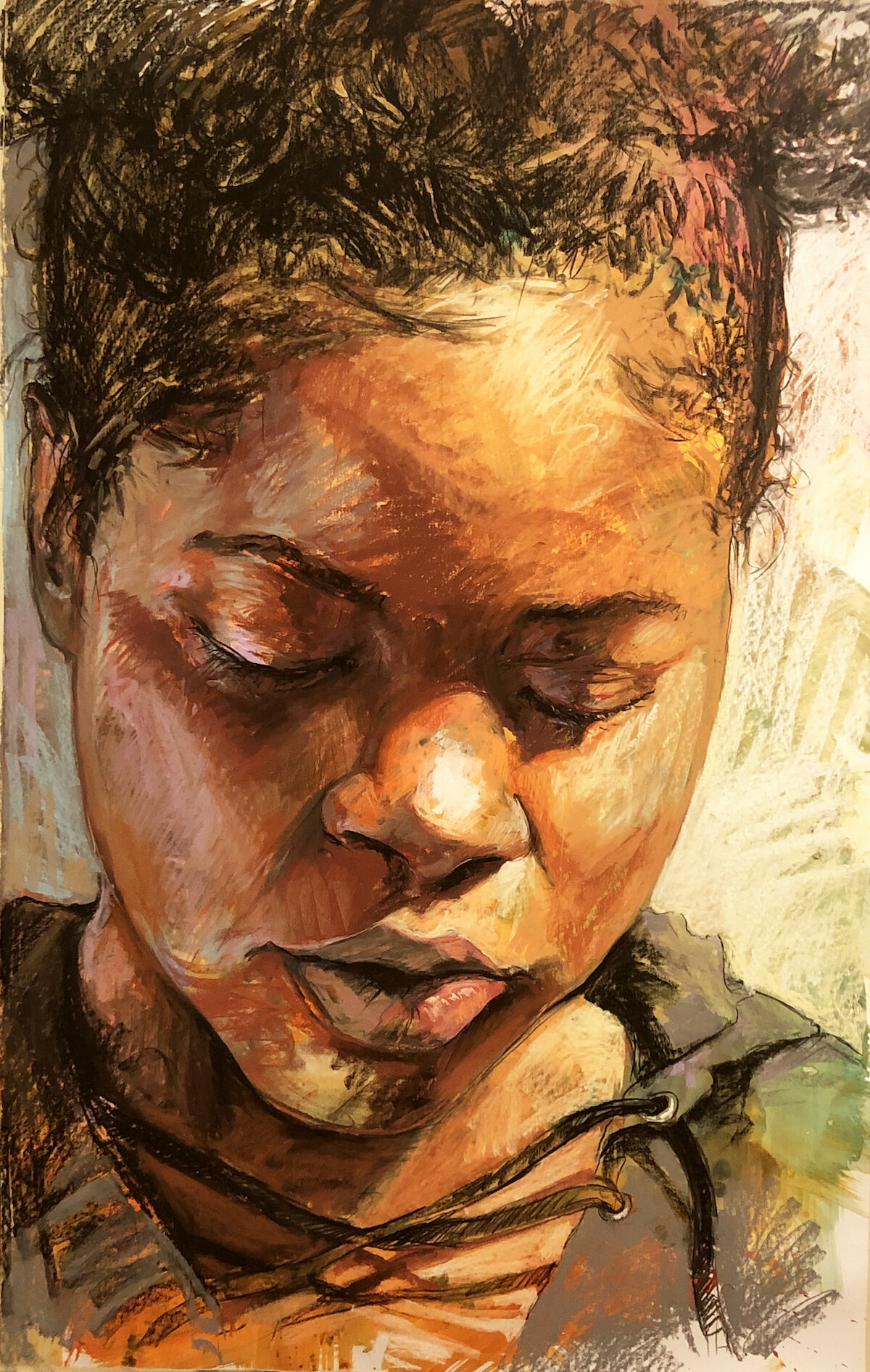
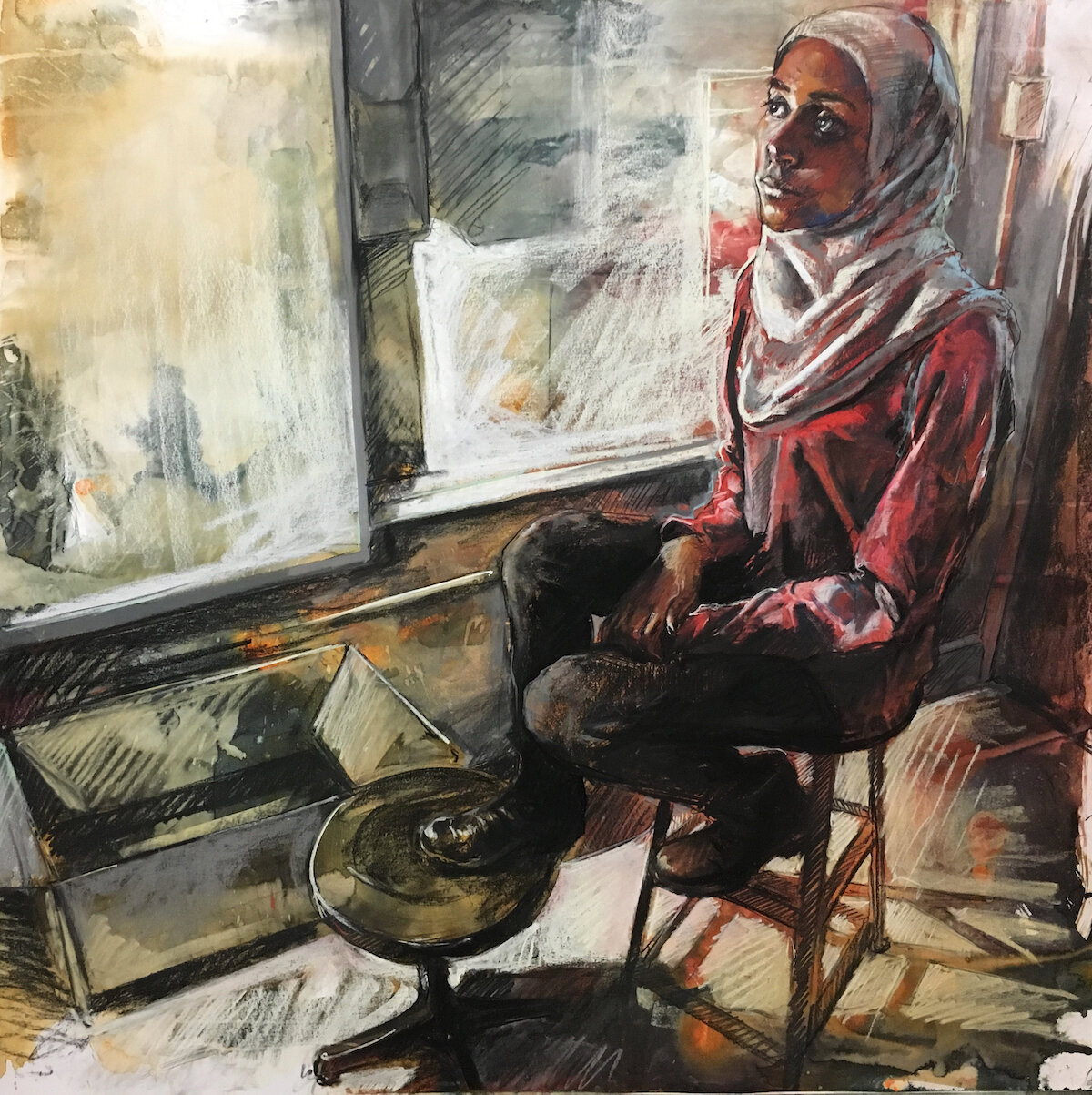
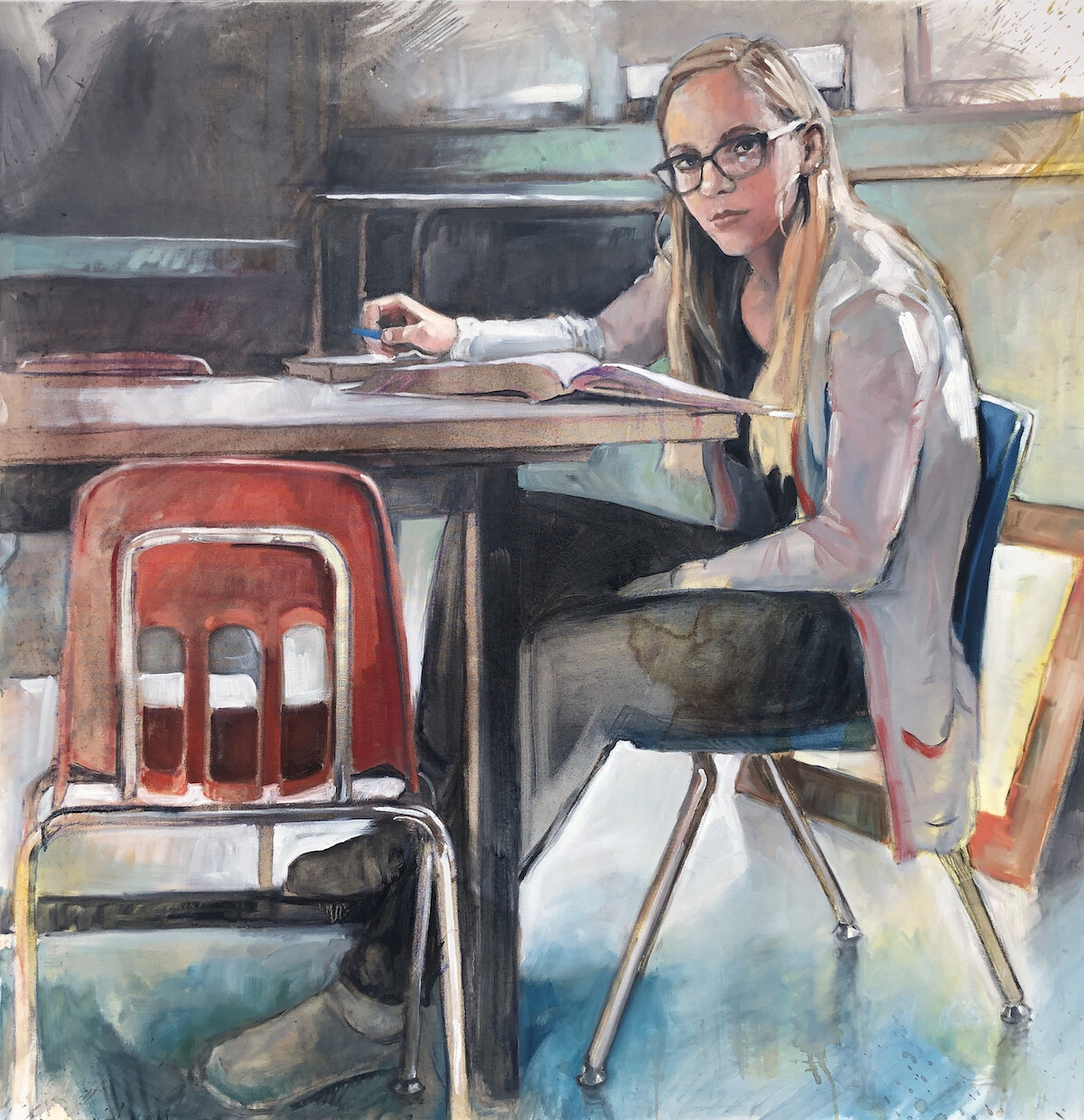
AAS: Some of the readers may not know that you grew up in a very artistic household. Describe what this was like. Were you ‘destined’ to become an artist?
“When I was a kid I guess I just assumed everyone’s house smelled like paint thinner.”
JM: I guess since it’s all I’ve ever known I haven’t put a lot of thought into being “destined” to become an artist. I think it had more to do with being immersed in it, and the fact that making art gave my ADHD brain an outlet. I should note I have two sisters, neither of which have pursued art, though my youngest sister was a far more talented artist as a teenager than I ever was at that age. Both of my sisters are educators; Erin a preschool teacher in Alabama and Christen a Spanish Teacher in Conway. Since mom was a career high school art teacher and I’ve been teaching now for 20 years, maybe it’s not art but teaching that’s the true family business.
Growing up with artistic parents allowed me to learn the craft without the structure or pressure that most young artists feel because it was just always happening around me. When I was a kid I guess I just assumed everyone’s house smelled like paint thinner. If I wasn’t wandering in to where dad was painting, I would take part in the group classes mom and dad taught out of their studio. Most of our family trips focused around visiting art museums in various cities. I guess it was a bonus that my folks had more knowledge about the works I was seeing than the average patron.
I also got to meet and know many local artists through dad. AJ Smith, Fred Schmidt, Al Allen, and Warren Criswell were some of the names familiar to me as a grade school student. What I learned from looking at their work is still influencing what I do today. There’s no way that you can’t credit my experiences growing up with and around artists for most of the success I’ve found in my own work more recently.
AAS: In college you studied art education. Did you always want to teach?
“Teaching has become so much of who I am. I think I’m more excited to see my students honored for their work than I am when my work gets attention.”
JM: No, I really wanted to play shortstop for the Yankees, but that didn’t work out. Instead, I followed my other childhood dream of being a fireman. I spent a year as a Little Rock firefighter in 1999, but it was clear that it was never really a fit. So, I went back to school at UCA, changed my major from a BFA in painting to a BA in Art Education, did a couple of extra senior years of college and found what I was supposed to do. Also, and more importantly, I met my wife, Melissa.
I’ve always enjoyed teaching. As a shrimpy middle schooler I spent time in my mother’s Drawing 1 class at North Little Rock High School after my school day ended. When mom was busy, her students would ask me for help with their work. Then In 1998 I started taking the reins of my parent’s classes they taught in the studio we shared. I’m still teaching those classes only now they’re taught in my studio. More than anything, I’ve just always felt comfortable passing on the things I’ve learned to others.
AAS: Your children are experiencing a similar childhood as you did – surrounded by art and artists. Do they have an interest in creating art?
JM: I think they’re at least a little interested. We have 3 kids; 16 and 13 year old daughters and a 7 year old son. Just like my parents were with me and my sisters, we haven’t put any pressure or expectations that they should follow in my footsteps. My daughters have shown some signs of talent in their own way. Our oldest, Reilly, took my Drawing 2 class last year at Central and did incredibly well, but seems to be more interested in 3D-Design. Our middle schooler, Leah, is probably the most interested in drawing and painting, and actually got into the Young Arkansas Artists exhibit at the Arkansas Arts Center last year. What made that so cool is that my work was in the Delta Exhibit at the same time, so we got to hang in the same gallery simultaneously. As for Aiden, our 7 year old, he’s still most interested in Power Rangers and Pokémon right now, so the jury’s still out. I think Melissa and I are like most parents, we just want them to be healthy and happy. We’ll let them sort out what they’ll grow up to be.
“In the end, I’m more concerned with interesting compositions and consistency in surface quality and mark-making across works regardless of media.”
AAS: Many of your works are in pastel, but you also use oil and I particularly like your charcoal drawings. Do you really have no preference in media? Is it the subject that dictates the media?
JM: I like the challenge that each of those materials presents, but I don’t really have a favorite. They’re each unique. Each is versatile but with limitations. More times than not, I use them to create mixed media works. In grad school, I started using pastel, charcoal, and thinned gesso to create something that was somewhere between drawing and painting. I loved how unpredictable and spontaneous my surface quality became. As a result, I spent a couple years after that experimenting with oils to create a similar effect. While my techniques have changed since then, those pieces still inform what I do today. In the end, I’m more concerned with interesting compositions and consistency in surface quality and mark-making across works regardless of media.
AAS: You are primarily a figurative and architectural artist and I admire the way even your paintings in the Industrial Architecture series evoke a hidden story like most of your portraits. What directs you to your subject matter when you are ready to paint? Or does the subject come first?
Our Fire Escape, 30” x 34”, oil on canvas
JM: Yeah, subject matter comes first. I’ve always liked images that tell stories. My graduate thesis was based on the idea that subject matter and application of materials could support one another to show the innate energy of the subjects. So whether it’s a spontaneity of a figure, or the activity of an urban environment the compositions and expressive media help tell their stories. Even if it’s a simple portrait or a fire escape, I try to make that aspect come through to the viewer. Places matter too. In my drawing Our Fire Escape, I featured a fire escape in downtown Little Rock that my dad and I each drew several times 30 years apart not realizing it was the same structure until later. Because of that cool connection the location had for us and that we were each drawn to the possibilities of it as a subject, I gave the drawing to dad as a gift.
Examples from the Industrial Architectural Series
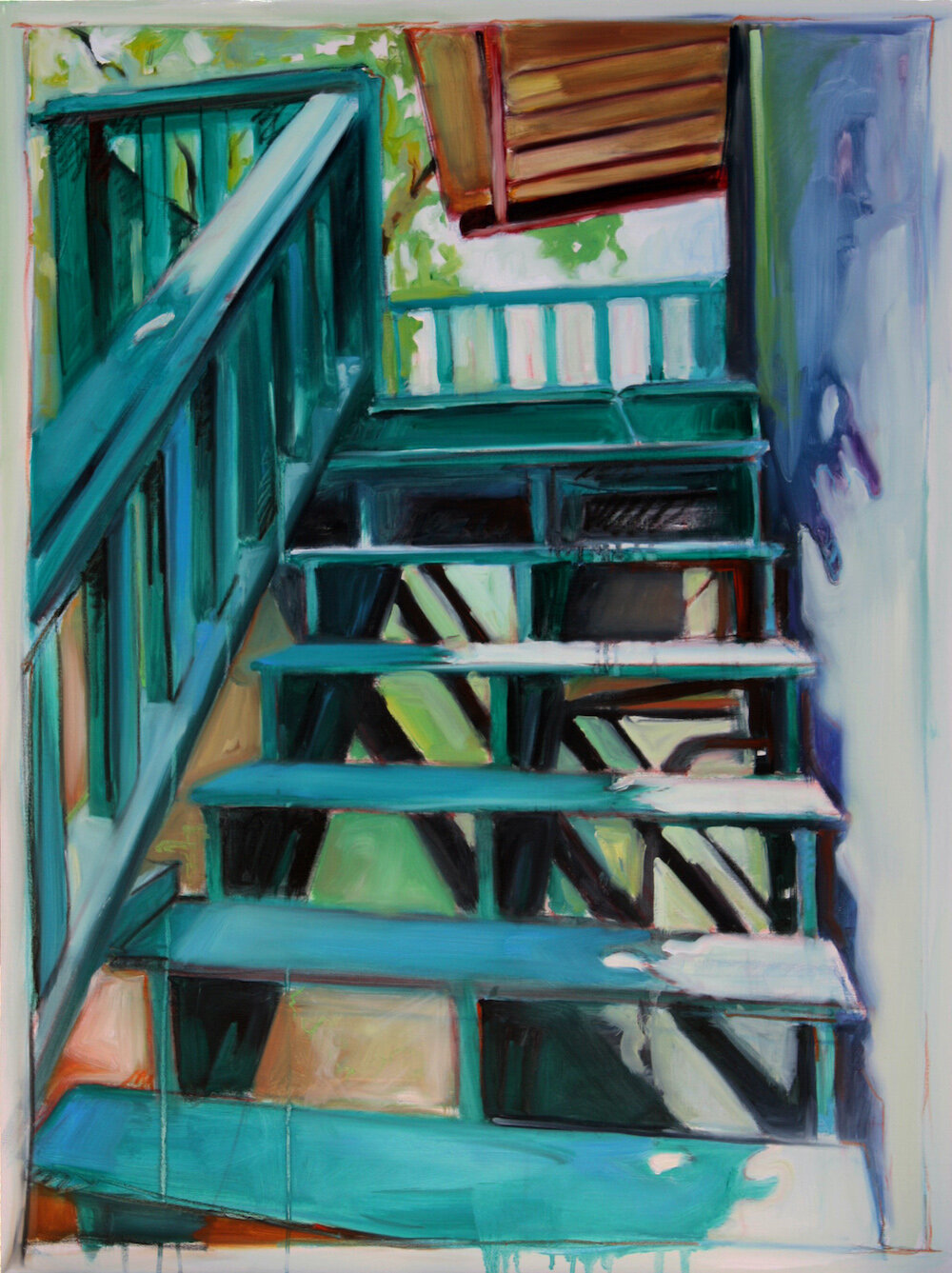
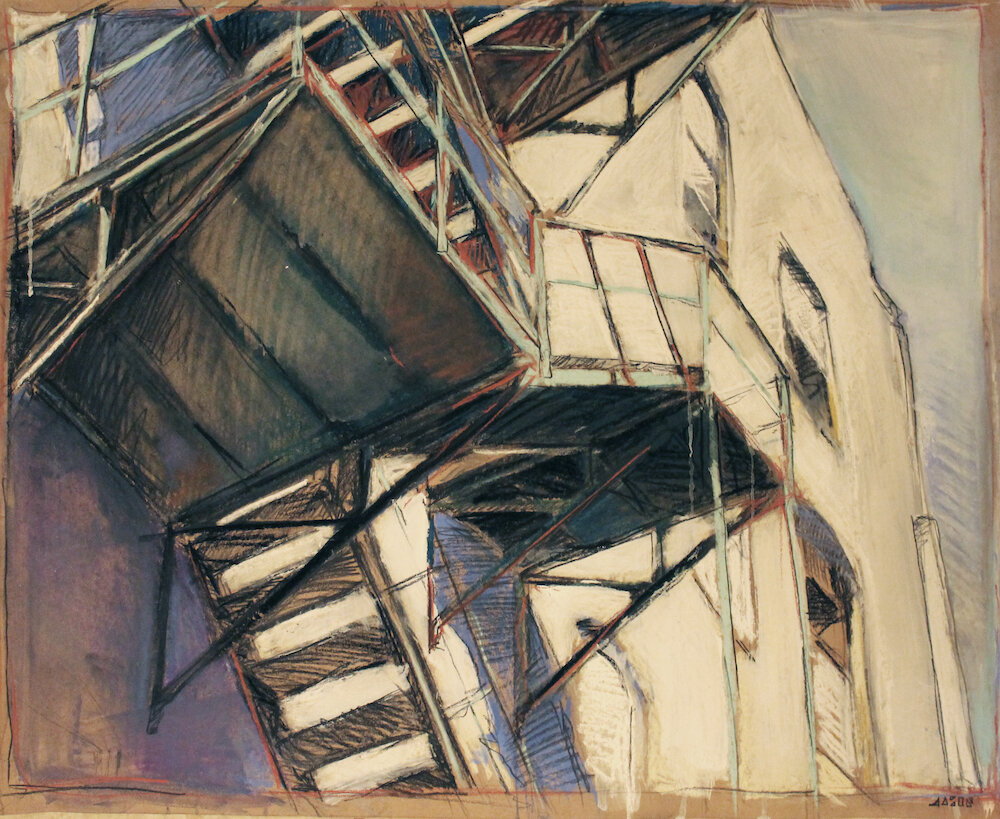
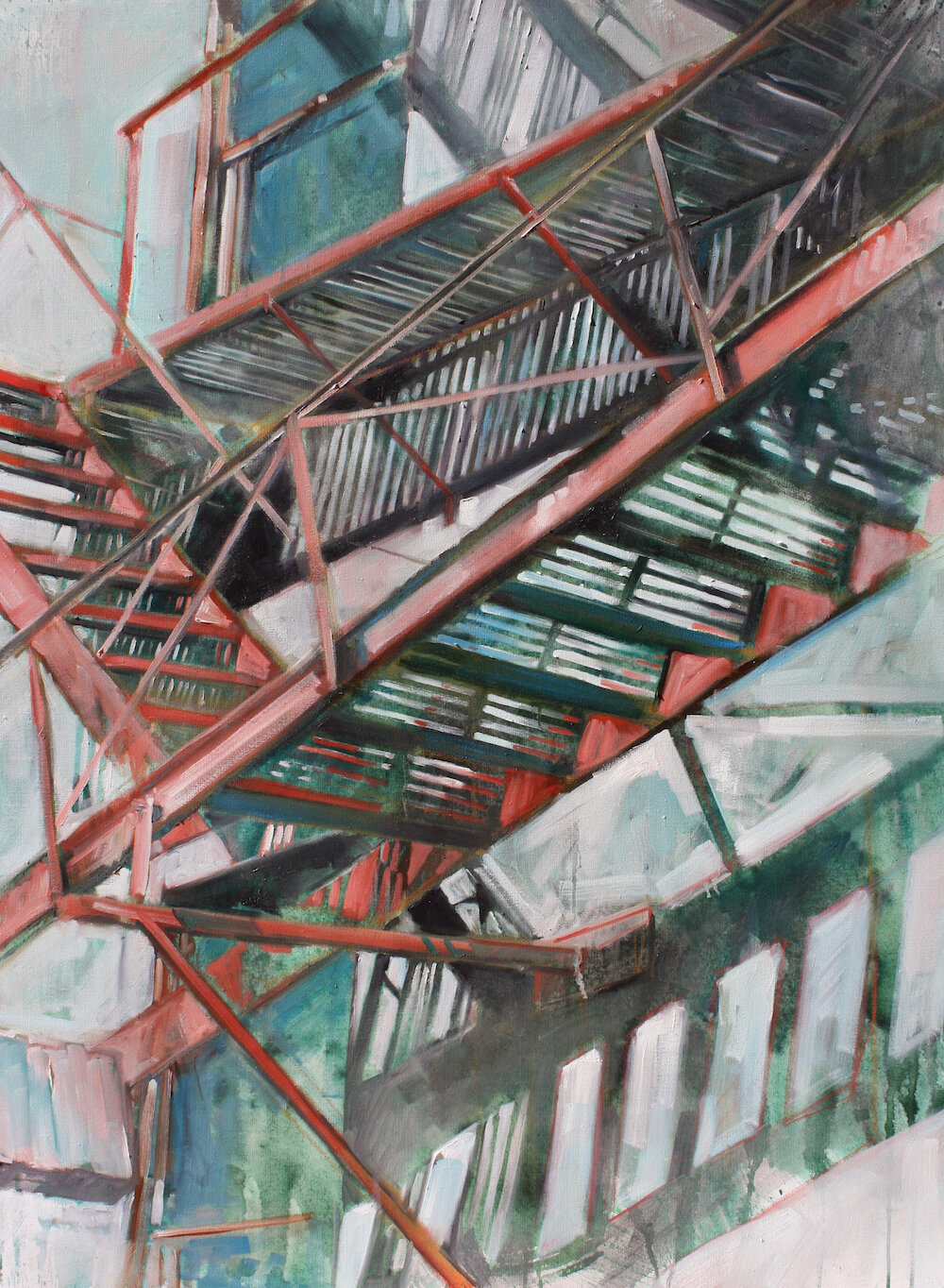
AAS: The American Student series has received a great deal of acclaim, including a piece in the 61st Annual Delta Exhibition. What do you think is the appeal of this portrait series?
JM: It goes back to telling stories. I care a great deal about my students. These kids are so cool and each bring personal experiences both good and bad into my classroom every day. I like to think that some of that comes through in the portraits. Public school systems are under fire right now from those with political power. From Betsy DeVos all the way down to the local level, proliferation of charter and private programs cuts into the funding for public schools. The ones who pay the biggest price are the kids. I’m trying to tell their story and I think that’s something people can emotionally connect with.
Strep Throat No2: The Red Bowl, 48” x 30”, oil on canvas
AAS: Your series, The Domesticated Artist, is almost a commentary on how to find time to paint – and what to paint – when trying to combine family life with the sometimes-isolated life of an artist.
JM: Yes, balancing family, the classroom, and teaching is tricky. I paint in bursts so to maximize time between family time, soccer games, and work stuff. Maybe that’s why I’m partial to a messy, spontaneous style…because I’m just always in a hurry. That said, the artworks themselves are a direct response to how people present their home life, specifically on social media. So much of that shows an artificial or edited version of who we are. Primarily the big moments, high points, or the funny stuff. While there’s nothing wrong with that, I’m more interested in the mundane aspects of my suburban middle-class existence. Instead of showing Leah posed holding a soccer trophy, I show her exhausted after a two day tourney, or my wife asleep on a Saturday morning in place of a formal portrait. I even did two paintings of my daughter laying on the couch, miserable with strep throat and one of her in the ER after breaking her arm. These are real moments that are just as memorable as the post-worthy stuff on Facebook, perhaps even more so.
AAS: I have to ask. Don’t your kids sometimes mind being painted? What about your high school students?
JM: I think my students are more excited about being the subject of artworks than my own children. That said, my kids are pretty desensitized to it at this point. They know I like capturing candid moments, and that I’m always taking photos without warning. With my students, most of the source images are created while I’m teaching kids how to set lighting for their own original compositions. I’ll later use those sample images to inspire the American Student works. The kids seem to get a kick out of being part of the body of work.
AAS: You have had a number of shows with one or more of your parents and one this month with both was planned but cancelled due to COVID-19. It must be great fun to have a show with them.
JM: Absolutely. It’s something you can’t take for granted, because it’s so unique. I mean, who gets to have a gallery opening with their parents? It’s an interesting thing to see because our work is very different but still shows obvious connections both visually and conceptually. It’s clear we know each other. I’ve had a few two person shows with dad over the years, and now with mom working more post-retirement we’ve done a couple of shows as a trio. It’s also pretty cool that dad and I have been in, I believe, 5 Delta Exhibits together as well as other regional competitive exhibits, and in the last couple years there have been instances where all three of us have gotten into the same shows.
Montre with Two Lights, 66” x 42”, watercolor and pastel on paper
AAS: You mentioned the Delta Exhibition. A work of yours has been selected for nearly every Annual Delta Exhibition in the last 10 years. That must be very satisfying – to have your body of work recognized in that way.
JM: I love the Delta Exhibition. I was more or less raised at the Arkansas Arts Center. As a kid I spent evenings at Delta openings and afternoons wandering through the galleries taking in temporary exhibits or the permanent collection. The Arts Center has always felt like home so to be selected several times is certainly affirming. I never expect to be included so when I have been lucky enough to be selected it’s a wonderful surprise. My first time in the exhibit in 1997 I was 19, and my most recent acceptance last year found me at 42. In between those years I’m pretty sure I’ve been rejected more times than accepted and you can add to those rejections this year’s 62nd Delta. I think the coolest thing about being in the show is the artists I hang beside. Anytime I’m in the same exhibit with AJ and Marjorie Williams-Smith, David Bailin, Michael Warrick, Warren Criswell, Neal Harrington, Kevin Kresse, and so many others I’ve learned from or are inspired by is a good day. In recent Deltas I’ve been on the other side of that, as several of my former students from Central High or Arkansas Governor’s School have been accepted. It’s just a cool show and I hope I’m lucky enough to find my work there in years to come.
AAS: In addition to teaching art at Central High School, you offer group art lessons to children of all ages and even adults. What do you like most about teaching?
JM: Teaching has become so much of who I am. I think I’m more excited to see my students honored for their work than I am when my work gets attention. Art has been such a wonderful outlet for me throughout my life that I’m more than willing to help others have that, whether they’re in grade school, high school, or adults. Each of those ages respond differently to successes and struggles, and that variety is refreshing as an educator. I think it makes me better at what I do having experiences with their different learning styles. But no matter the age, seeing a student find satisfaction with learning a new skill makes my job pretty great.
“I say all the time … ‘The worst thing you’ll do is mess it up, and that’s not so bad’.”
AAS: What is the best advice you give your students who really want to become ‘professional’ artists? What is the most common advice they ask for?
JM: Oh man, there are too many questions to cover. The most common is “How can I make any money doing this?” to which I usually respond, “If you figure it out let me know.” The biggest thing I encourage them to do is to keep learning to make new things, and to make lots of mistakes in the process. Because that is the biggest part of the process. The way I teach my class isn’t complicated. I encourage kids to try lots of different processes and materials and when they struggle that’s when I start teaching. I know that I’ve learned more about my own work when I’ve screwed up or overworked something and had to figure out how to bring it back. There’s really no better teacher than hands on experience, and that experience doesn’t always have to be positive, sometimes things just don’t work. I also try to keep them from falling in love with their works in progress. When things become that precious, I find that they’re less likely to try push themselves or their work to the next level. I say all the time when they question whether to do something experimental with their work, “The worst thing you’ll do is mess it up, and that’s not so bad.” I hope that those lessons provide them the answers they need if they choose this career path.
Examples from The Domesticated Artist series


